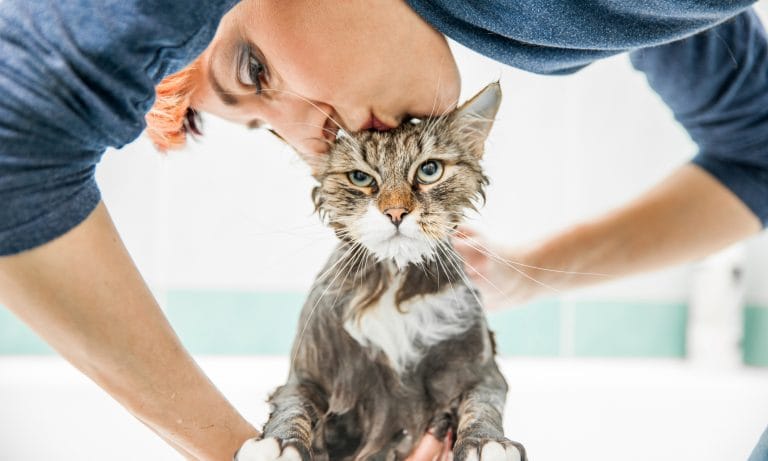Fleas and ticks aren’t just a nuisance—they can also be dangerous. They can infect your dog or cat with life-threatening illnesses and even impact your own health and home. There are many different kinds of flea and tick products on the market. Depending on your location, pet and activity level, you may need a different form of tick and flea treatment than another. Protect your pet and keep the bugs away with these powerful options:
Topical Treatments
Topical flea treatments like TropiClean, Frontline and K9 Advantix II are medicines applied directly to your pet’s skin, normally on her shoulder blades or on the back of her neck. While you apply the medicine to one specific area, the chemicals spread over the animal’s whole body, distributing evenly, so your pet is protected for several weeks. They are very convenient for most pet owners—you can apply it once a month and forget about it until the next application time. And because topical flea treatments will last even through swimming, they are popular summer solutions for an active pet.
However, there are some drawbacks. Topical flea and tick medications are highly concentrated and, for pets with sensitive skin, they can cause irritation, rashes or other issues. Additionally, the animal cannot swim or be bathed for up to 48 hours after application, so you do need to be careful about scheduling application and activities.
Oral Medications
If you don’t like the idea of topical flea treatments or flea collars, you can give your pet an oral treatment instead. Flea Away is one option that takes a natural approach to keeping pesky fleas and ticks away. The unique mix of vitamins makes your cat or dog unappealing to pests.
While it’s gentler on an animal’s system, for pets in heavily wooded areas or who spend a lot of time outside, the vitamins may not be effective enough to prevent your pet from getting bit. For instance, if your dog goes to the dog park every now and again, oral medications may be plenty. But if you take your canine friend hunting with you through the forest, you may need something else along with the oral medication.
Collars
Tick and flea collars are one of the most common and cost-effective methods of flea and tick prevention, like the collars by Seresto. You simply place the tick and flea collar around your pet’s neck, which can protect them for several months. It’s quick and convenient, without the mess of topical solution or worrying about chemicals on your pet’s skin.
The one downside is that they can give off a pretty strong smell that can even irritate your pet. But for pets who can’t stand the topical treatments or refuse to swallow orals medications, flea collars can be a safe substitute. They are secure since the animal can’t lick or rub it off.
Baths
Even if you religiously apply pest preventatives, fleas and ticks are tough and can still cling to your companion. Flea baths can be an effective way to eliminate adult fleas and their eggs. Dog and cat flea shampoos like Richard’s Organics are very inexpensive and can get your pet clean in just 15 minutes. However, washing your pet only kills the fleas currently on the animal—it doesn’t prevent another infestation. If your pet is kept mainly indoors, such as a house kitty, a bath may be all that is necessary. But if you have a dog that goes outside daily, baths are best when paired with another method.
Safety First
It is important to note that regardless of which solution you choose, you should always read the manufacturer’s directions before use, and follow them carefully. And never use dog solutions on cats, or vice versa, as it could be very dangerous to your pet.
It’s no secret that fleas and ticks can be one of the biggest downsides of the spring and summer when you have pets. But by understanding your options and considering your furry friend’s favorite activities, you can keep them safe and bug-free all season long.
Share:
















